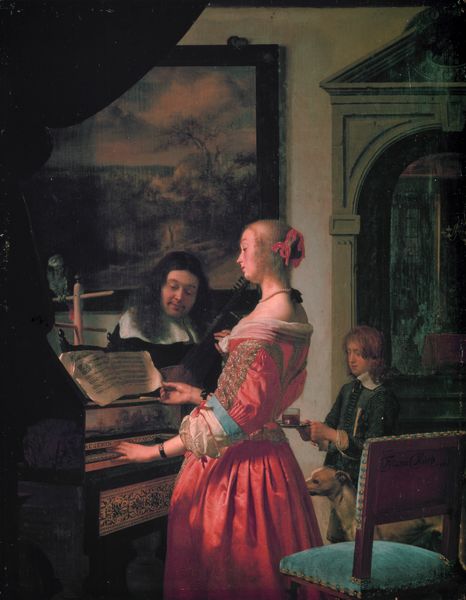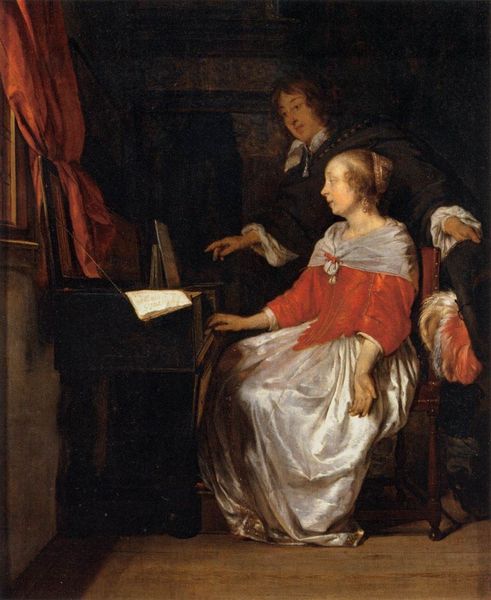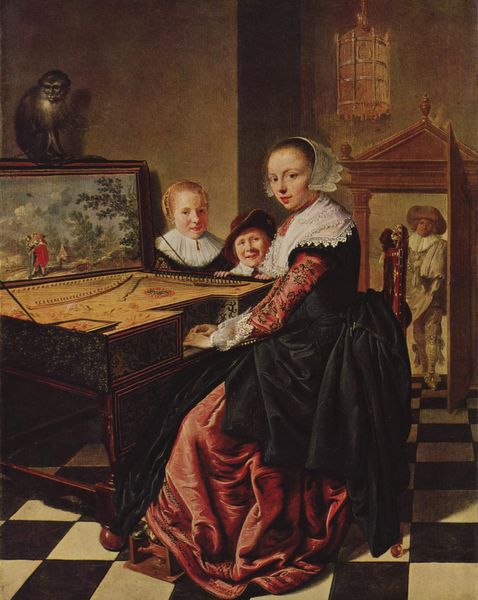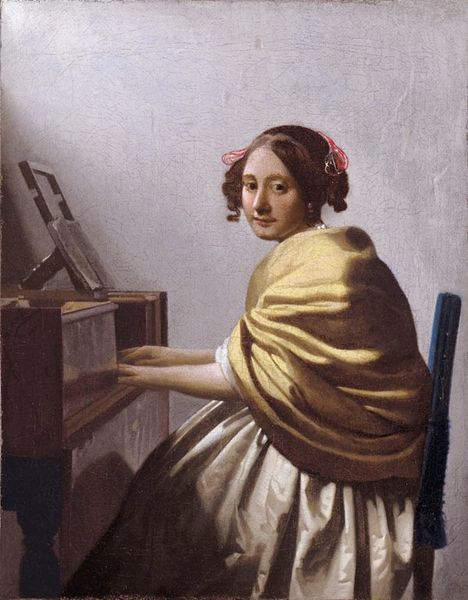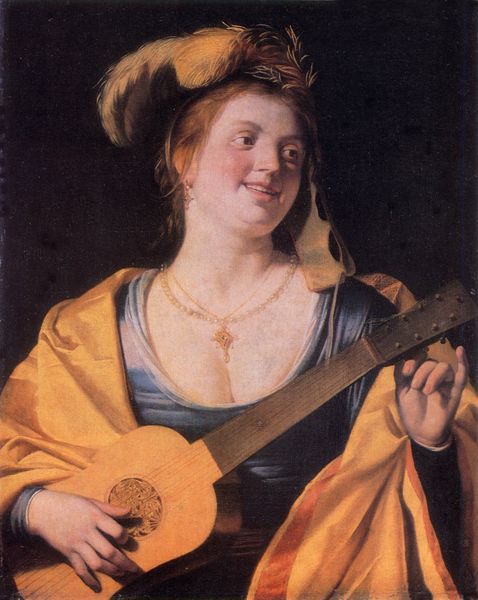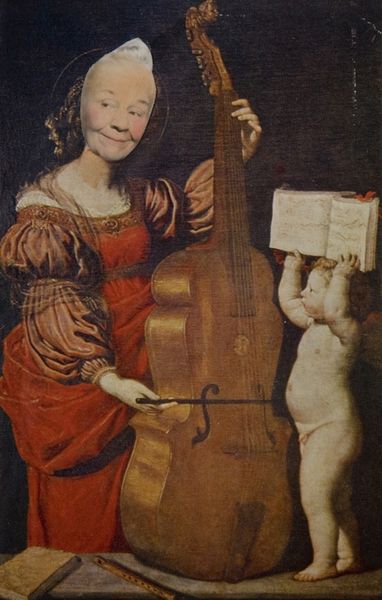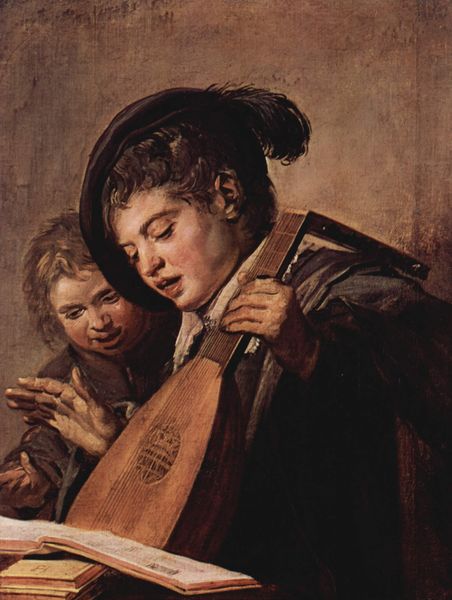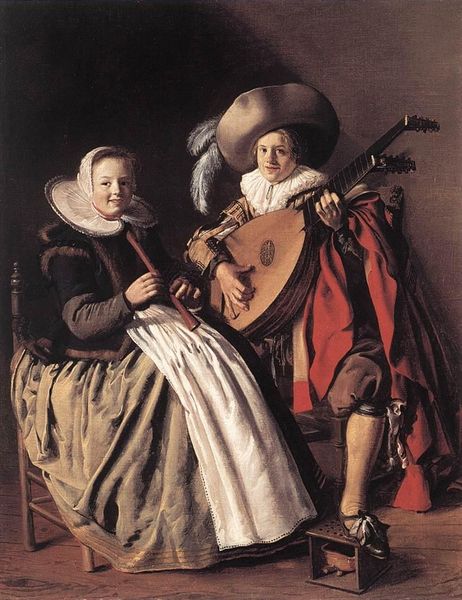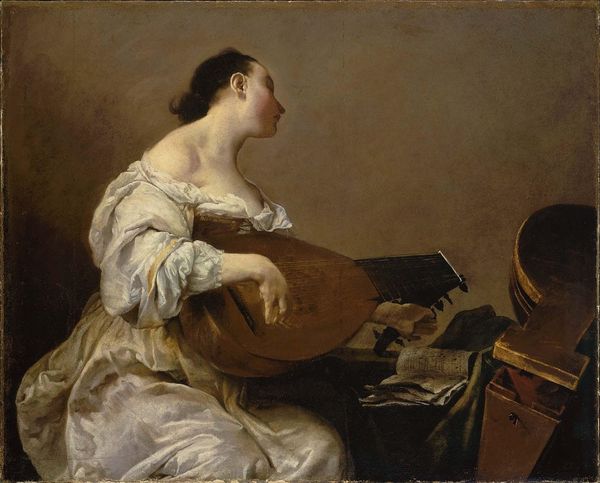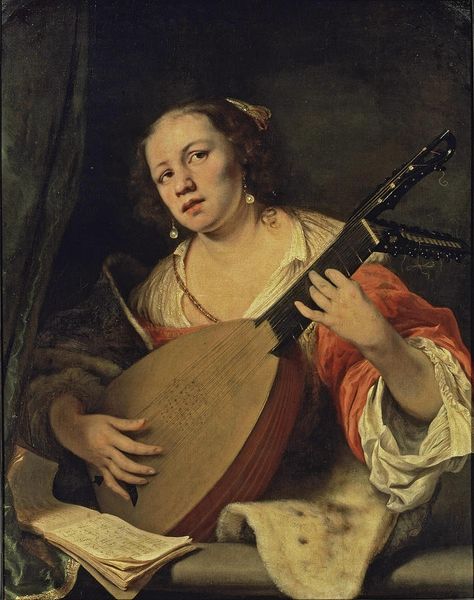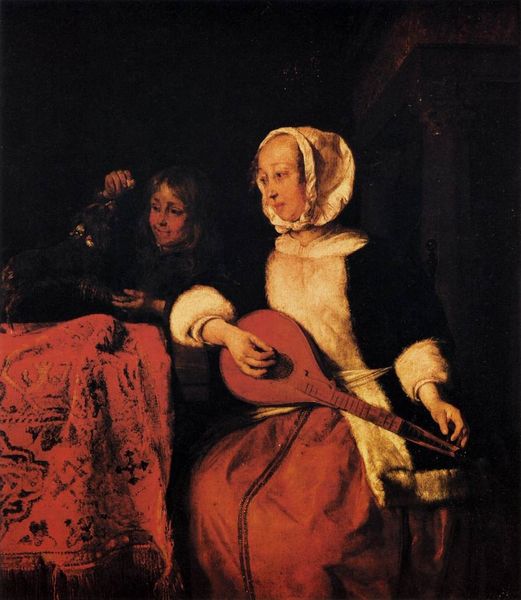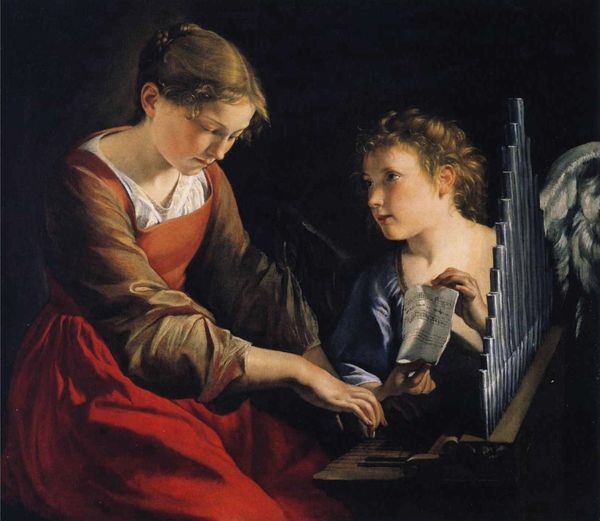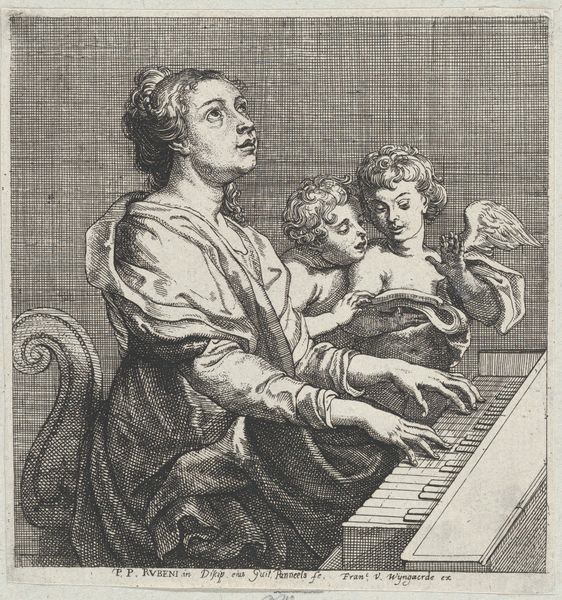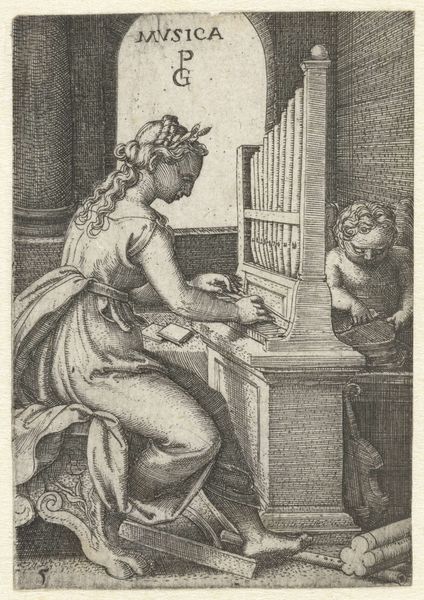
painting, oil-paint
#
portrait
#
self-portrait
#
narrative-art
#
painting
#
oil-paint
#
mannerism
#
history-painting
Copyright: Public domain
Editor: Here we have Lavinia Fontana’s “Self-Portrait at the Clavichord with a Servant” from 1577, oil on canvas. I'm immediately struck by the contrast; the subject is bathed in warm light, confident and self-assured, a striking claim to status as an artist. How do you interpret this work within its historical context? Curator: This portrait performs a careful balancing act, negotiating the complex terrain of gender and artistic ambition in 16th-century Bologna. Fontana situates herself not merely as a beautiful woman, but as an intellectual and a professional. Editor: How does the presence of the servant and the clavichord contribute to that? Curator: Precisely! The servant, holding sheet music, acknowledges Fontana’s musical talent, and more significantly, the clavichord becomes a symbol of her education, artistic prowess and social standing. But consider the male dominated structures of the Renaissance—what barriers did Fontana potentially confront? Editor: Societal expectations? Access to training? Maybe being taken seriously as a history painter? Curator: Yes. And this image actively challenges such barriers. Her direct gaze engages the viewer, asserting her presence in a world that often excluded women from the artistic sphere. It is important to think about the role of art in promoting equality. Editor: That’s so fascinating! So it’s not just a portrait; it's a statement. Curator: Exactly. It speaks volumes about her awareness of gender politics and her deliberate self-fashioning as a talented, educated, and independent artist. Editor: Thank you, that’s really helped me understand the portrait's message!
Comments
No comments
Be the first to comment and join the conversation on the ultimate creative platform.
